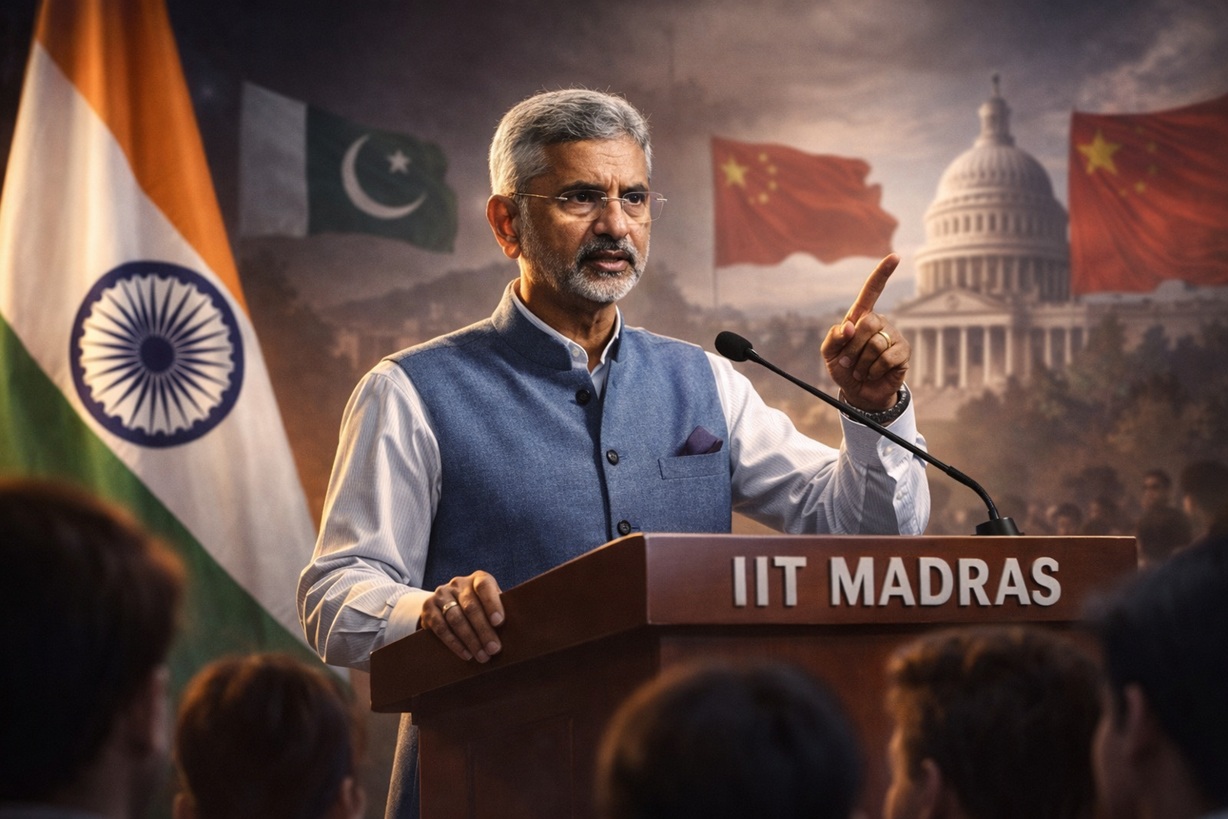This article digs into the rich culinary culture of Kashmir, highlighting its diverse flavours, seasonal ingredients, and cultural influences. It discovers the unique blend of spices, the abundance of vegetarian options, and the impact of Kashmir’s climate on its traditional dishes. Additionally, it emphasizes the role of local communities in preserving Kashmiri culinary traditions and the significance of saffron in adding a touch of luxury to the cuisine.
Kashmir not only captivates with its scenic beauty but also charms with its rich culinary culture. The cuisine of Kashmir is a harmonious symphony of flavours, blending aromatic spices, slow-cooking techniques, and seasonal ingredients. It is a culinary journey that reflects the region’s diverse culture, climate influences, and centuries-old traditions. Kashmir’s fertile land yields a bounty of fresh produce, including a variety of fruits, vegetables, and grains. Apples, cherries, apricots, and walnuts flourish in the orchards, while spinach, turnips, and mustard greens grow in the fertile soil. These locally grown ingredients form the backbone of Kashmiri cuisine, infusing dishes with freshness and authenticity.
One of the defining features of Kashmiri cuisine is its unique blend of flavours. Rather than relying on overwhelming spiciness, Kashmiri dishes showcase the art of subtle seasoning, with spices like saffron, fennel, cardamom, and cloves adding depth and complexity to each dish. Local farmers cultivate these spices, carefully harvesting and processing them to preserve their aromatic qualities.
Contrary to common perception, Kashmiri cuisine offers a plethora of vegetarian options that are equally tempting. From the comforting warmth of Dum Aloo (spiced potatoes) to the nutritious goodness of Kashmiri Saag (leafy greens cooked with spices), vegetarian dishes in Kashmir reflect the region’s love for fresh produce and aromatic spices. Each dish tells a story of culinary expertise and cultural heritage.
The climate of Kashmir plays an important role in shaping its culinary traditions. Cold winters give rise to hearty dishes like Yakhni (broth) and Harissa (slow-cooked porridge), providing nourishment and comfort during the chilly months. In contrast, the moderate summers inspire lighter fare such as Tujji (grilled meat) and Phirni (rice pudding), incorporating seasonal fruits and refreshing flavours.
Local communities in Kashmir, including farmers, artisans, and traditional cooks, form the backbone of the region’s food culture. They rely on age-old farming practices, sustainable harvesting methods, and time-honoured culinary techniques to bring out the best flavours in Kashmiri cuisine. This interdependent relationship between nature and people ensures that each meal is not just a feast for the senses but also a celebration of local traditions and heritage.
Saffron, known as the “Golden Spice,” holds a special place in Kashmiri cuisine. Beyond its culinary significance, saffron symbolizes luxury and prosperity, making it a prized ingredient in dishes like Modur Pulao (saffron-infused rice) and desserts like Phirni. Kashmir’s saffron fields not only contribute to the region’s economy but also add a touch of opulence to its culinary heritage. Kashmiri cuisine is a celebration of nature’s bounty, cultural diversity, and culinary artistry. Each dish is a centuries-old traditions, passed down through generations, and filled with the flavours of Kashmir’s picturesque sceneries. Let us find the few Kashmiri cuisine and their importance:
Rogan Josh: A signature Dish

Rogan Josh, a signature dish of Kashmiri cuisine, has a rich history intertwined with cultural influences and culinary traditions. The origins of Rogan Josh can be traced back to Persian cuisine, where the term “Rogan” refers to oil or fat, and “Josh” means heat or passion. This flavourful lamb curry made its way to Kashmir during the Mughal era, gaining popularity and evolving into the iconic dish it is today. It is prepared by marinating pieces of lamb in yogurt and a blend of spices like Kashmiri red chili powder, fennel, ginger-garlic paste, and saffron. The marinated lamb is then slow cooked in a rich gravy made with onions, tomatoes, and more spices until tender. A special oil infusion called “rogan” is prepared separately by heating oil with Kashmiri red chili powder, adding a vibrant colour and unique flavour. The fragrant rogan is drizzled over the cooked lamb curry before serving, creating a dish that is aromatic, tender, and bursting with flavours.
Yakhni: A traditional Kashmiri Broth

Yakhni, a traditional Kashmiri broth, has a history rooted in Persian culinary influences, dating back centuries. The term “Yakhni” originates from the Persian word “Yakh,” meaning yogurt or curd, reflecting the foundational role of yogurt in this flavourful broth. Introduced to Kashmir through cultural exchanges, Yakhni has evolved into a beloved dish that embodies the region’s culinary heritage.
To prepare Yakhni, tender cuts of meat such as chicken or lamb are simmered in a pot of water with onions, garlic, ginger, and a blend of aromatic spices like cloves, cardamom, cinnamon, and bay leaves. A Yakhni masala, made from ground whole spices, is added to enhance the broth’s depth and aroma. Yogurt is then incorporated to create a creamy and tangy base, resulting in a comforting and nourishing dish that is typically garnished with fresh coriander or mint leaves before serving alongside steamed rice or Kashmiri bread.

Dum Aloo: Spiced Potatoes Cooked in Yogurt Gravy
“Dum Aloo,” a beloved Kashmiri dish, features spiced baby potatoes cooked in a creamy yogurt gravy. Dum Aloo has become a staple in Kashmiri cuisine, showcasing the region’s rich culinary heritage. To prepare Dum Aloo, baby potatoes are parboiled and then fried until golden. They are then simmered in a flavourful gravy made with yogurt, onions, tomatoes, and aromatic spices like Kashmiri red chili powder, fennel seeds, ginger-garlic paste, and a touch of asafoetida. This slow-cooking process, known as “dum” cooking, allows the potatoes to absorb the rich flavours of the gravy, resulting in a creamy and tender dish.
Dum Aloo is commonly served at festive occasions and pairs well with steamed rice or Kashmiri bread. Its creamy texture and aromatic spices make it a favourite among food enthusiasts, capturing the essence of Kashmiri flavours in every bite.
Modur Pulao: Sweet Saffron-Infused Rice
“Modur Pulao,” a sweet saffron-infused rice dish from Kashmiri cuisine, reflects the region’s rich culinary heritage. While its precise historical origins are not widely recorded, the dish has evolved over time, influenced by Kashmir’s unique ingredients and cooking traditions.

To prepare Modur Pulao, basmati rice is soaked briefly. Saffron strands, known for their distinctive aroma and vibrant colour, are soaked in warm milk to release their essence.
In a heavy-bottomed pan or pot, ghee (clarified butter) is heated, and whole spices like cinnamon, cloves, and cardamom are added to infuse the ghee with their flavours. The soaked rice is then drained and added to the pan, along with the saffron-infused milk, sugar, and a pinch of salt. This combination of ingredients creates a fragrant and subtly sweet base for the Modur Pulao.
The rice is gently cooked in the saffron-infused liquid until it is tender and each grain is separate. Towards the end of the cooking process, fried cashew nuts, almonds, and raisins are added to the pulao, providing a delightful crunch and additional sweetness. This aromatic and visually stunning dish is typically served as a festive delicacy during special occasions and celebrations in Kashmir, representing the essence of Kashmiri cuisine with its rich flavours and saffron used allure.
Kashmiri Saag: Leafy Greens Cooked with Spices
“Kashmiri Saag,” a traditional dish from Kashmiri cuisine, features leafy greens cooked with a blend of aromatic spices, creating a flavourful and nutritious meal. Its preparation and popularity are deeply rooted in the region’s culinary traditions and the use of locally grown ingredients.

To prepare Kashmiri Saag, a variety of leafy greens such as spinach, mustard greens, or collard greens are washed thoroughly and chopped. These greens are then cooked with a mix of spices that typically include cumin seeds, ginger, garlic, red chili powder, and a hint of asafoetida for depth of flavour. The greens are sautéed in ghee (clarified butter) or oil until wilted and tender, allowing the spices to infuse their aromatic essence into the dish. Some variations of Kashmiri Saag may also include yogurt or cream to add richness and balance to the flavours.
Kashmiri Saag is often served as a side dish alongside main courses like rice or bread, such as naan or roti. It is a nutritious and wholesome addition to meals, providing a burst of flavours and the goodness of leafy greens cooked to perfection. The dish highlights the simplicity and elegance of Kashmiri cuisine, celebrating the natural flavours of locally sourced ingredients.
Gushtaba: Minced Meatballs in Yogurt Curry
“Gushtaba,” a culinary gem of Kashmiri cuisine, has a history steeped in tradition and cultural significance. The origins of Gushtaba can be traced back to the royal kitchens of Kashmir, where it was created as a dish fit for royalty during special occasions and feasts. The name “Gushtaba” translates to “meatball” in Persian, reflecting the essence of this dish. It is made from finely minced meat, traditionally lamb or mutton, that is delicately seasoned with spices like fennel seeds, ginger-garlic paste, and Kashmiri red chili powder. The meat mixture is then shaped into large, tender meatballs, known for their melt-in-your-mouth texture.

To prepare Gushtaba, the meatballs are first cooked in boiling water until they are tender and cooked through. Meanwhile, a flavourful yogurt-based curry is prepared with ingredients like yogurt, onions, garlic, ginger, and a blend of aromatic spices such as cloves, cardamom, and cinnamon. This creamy and aromatic curry is simmered until it reaches a rich consistency. Once the meatballs are cooked, they are added to the yogurt curry and allowed to simmer together, allowing the flavours to blend and the meatballs to absorb the creamy sauce. Garnished with fresh coriander leaves or mint leaves, Gushtaba is typically served hot with steamed rice or Kashmiri bread like naan or roti.
Gushtaba’s rich history and exquisite flavours make it a beloved dish in Kashmiri cuisine, often enjoyed during festive celebrations and special gatherings. Its combination of tender meatballs and flavourful yogurt curry showcases the culinary expertise and passion for fine dining that defines Kashmiri cooking.
Phirni: A Rich Rice Pudding Dessert
“Phirni,” a beloved dessert from Kashmiri cuisine, is a rich and creamy rice pudding that delights the senses with its luscious texture and aromatic flavours. This dessert has a history that dates back centuries, with roots in the royal kitchens of Kashmir where it was served as a regal delicacy during special occasions and celebrations.

To prepare Phirni, a specific variety of rice called “basmati” is soaked in water for a few hours and then ground into a coarse paste. This rice paste is cooked slowly in milk until it thickens, creating a smooth and velvety base for the Phirni. The cooked rice-milk mixture is then sweetened with sugar and flavoured with cardamom powder, saffron strands, and a touch of rose water, giving Phirni its distinctive aroma and taste. The addition of chopped nuts like almonds, pistachios, and cashews adds a delightful crunch and enhances the richness of the dessert.
Once the Phirni reaches the desired consistency, it is poured into individual serving bowls or terracotta pots and allowed to cool. Before serving, it is garnished with a sprinkle of finely chopped nuts and a few strands of saffron, adding visual appeal and a best of flavour.
Phirni is typically served chilled, making it a refreshing and indulgent treat, especially during hot summer months. Its creamy texture, fragrant spices, and nutty crunch make it a favourite among dessert lovers, symbolizing the essence of Kashmiri culinary expertise and passion for exquisite sweets.
Harissa: Slow-Cooked Meat and Wheat Porridge
“Harissa,” a traditional dish from Kashmiri cuisine, is a hearty and comforting slow-cooked meat and wheat porridge that has been cherished for generations. Its origins can be traced back to the rural kitchens of Kashmir, where it was prepared as a nourishing meal during cold winter months and festive occasions.

To prepare Harissa, whole wheat grains and meat, often chicken or mutton, are simmered together in a large pot with water. The slow-cooking process allows the wheat grains to soften and the meat to become tender, resulting in a thick and creamy porridge-like consistency. As the wheat and meat cook, aromatic spices such as cloves, cinnamon, cardamom, and bay leaves are added to the pot, infusing the Harissa with rich flavours and enticing aromas. The addition of ginger-garlic paste and Kashmiri red chili powder adds depth and warmth to the dish.
Harissa is traditionally cooked over a low flame for several hours, allowing the flavours to blend together and develop a rich, savoury taste. The slow-cooking method also allows the wheat grains to break down and thicken the porridge naturally, creating a satisfying and filling meal.
Once cooked to perfection, Harissa is served hot, often garnished with a drizzle of ghee (clarified butter) for added richness and flavour. It is typically enjoyed with Kashmiri bread like naan or roti, creating a wholesome and comforting dining experience that captures the essence of Kashmiri culinary traditions.
Seekh Tujji: Grilled Meat Delicacy
“Tujji” is a delectable grilled meat delicacy from Kashmiri cuisine that tantalizes the taste buds with its smoky flavour and tender texture. This dish has a history deeply rooted in Kashmir’s culinary heritage, where it has been enjoyed for generations as a popular street food and festive treat.

To prepare Tujji, succulent pieces of meat, often chicken or lamb, are marinated in a blend of spices and yogurt to enhance their flavour and tenderness. The marinade typically includes ingredients like ginger-garlic paste, Kashmiri red chili powder, cumin powder, coriander powder, and a hint of mustard oil for that authentic Kashmiri touch. Once marinated, the meat pieces are skewered and grilled over charcoal or an open flame, allowing them to cook slowly and absorb the smoky essence of the fire. The grilling process imparts a unique charred flavour to the meat, adding depth and complexity to its taste profile.
Tujji is often served hot off the grill, garnished with fresh coriander leaves and a squeeze of lemon juice for a burst of freshness. It is commonly enjoyed with naan bread or as part of a traditional Kashmiri meal, adding a delightful smokiness and savoury element to the dining experience.
Whether enjoyed as a street food snack or a centrepiece dish at a festive gathering, Tujji embodies the rustic charm and healthy flavours of Kashmiri cuisine, making it a beloved culinary delight for food enthusiasts.
Tabak Maaz: A Culinary Heritage of Kashmir

Tabak Maaz, a cherished dish in Kashmiri cuisine, has its roots in the royal kitchens of Kashmir, where it was savoured as a delicacy fit for royalty during grand celebrations. This traditional dish features succulent lamb ribs, marinated in a blend of yogurt and aromatic spices like fennel powder, ginger powder, Kashmiri red chili powder, and garam masala, creating a flavourful symphony that delights the palate.
To prepare Tabak Maaz, the marinated lamb ribs are gently cooked in ghee (clarified butter) until they achieve a tender and golden-brown texture, infusing the meat with rich flavours. A touch of water is added to the pan to simmer the ribs, allowing the sauce to develop into a luscious and fragrant accompaniment. The final touch involves grilling or roasting the ribs to perfection, enhancing their texture and adding a delightful crispiness. Tabak Maaz is traditionally served hot, garnished with fresh coriander leaves and a squeeze of lemon juice, creating a harmonious balance of flavours that represents Kashmiri culinary finesse and the art of slow-cooked meats.
Lyodur Tschaman: A Taste of Kashmiri Tradition
Lyodur Tschaman, an admired dish in Kashmiri cuisine, carries a rich history steeped in culinary tradition. This delightful cheese dish is a staple in Kashmiri households, often gracing the tables during festive gatherings and celebrations.

To prepare Lyodur Tschaman, cubes of paneer (Indian cottage cheese) are sautéed in a fragrant blend of mustard oil or ghee along with cumin seeds, asafoetida, green chilies, and grated ginger. A medley of spices including turmeric, red chili powder, and fennel powder is added, infusing the paneer with a burst of flavours. The paneer is then coated in a creamy yogurt mixture, simmered gently until the sauce thickens, and the paneer absorbs the rich flavours. Garnished with fresh coriander leaves, Lyodur Tschaman is served hot, complementing steamed rice or Kashmiri bread like naan or roti.
This dish sums up the essence of Kashmiri culinary heritage, showcasing the marriage of creamy paneer with aromatic spices in a dish that is both comforting and bursting with flavours.
Kashmiri cuisine offers a culinary journey that fascinates both food enthusiasts and travellers alike. From signature dishes like Rogan Josh and Dum Aloo to traditional delights such as Harissa and Tujji, each dish tells a story of rich flavours, cultural heritage, and culinary finesse. Whether you’re a food lover seeking aromatic spices and tender meats or a traveller exploring the vibrant food culture of Kashmir, the diverse array of dishes like Tabak Maaz and Lyodur Tschaman promises an unforgettable gastronomic experience. With its blend of tradition, innovation, and irresistible flavors, Kashmiri cuisine invites everyone to savour the essence of this beautiful region through its delectable creations.





